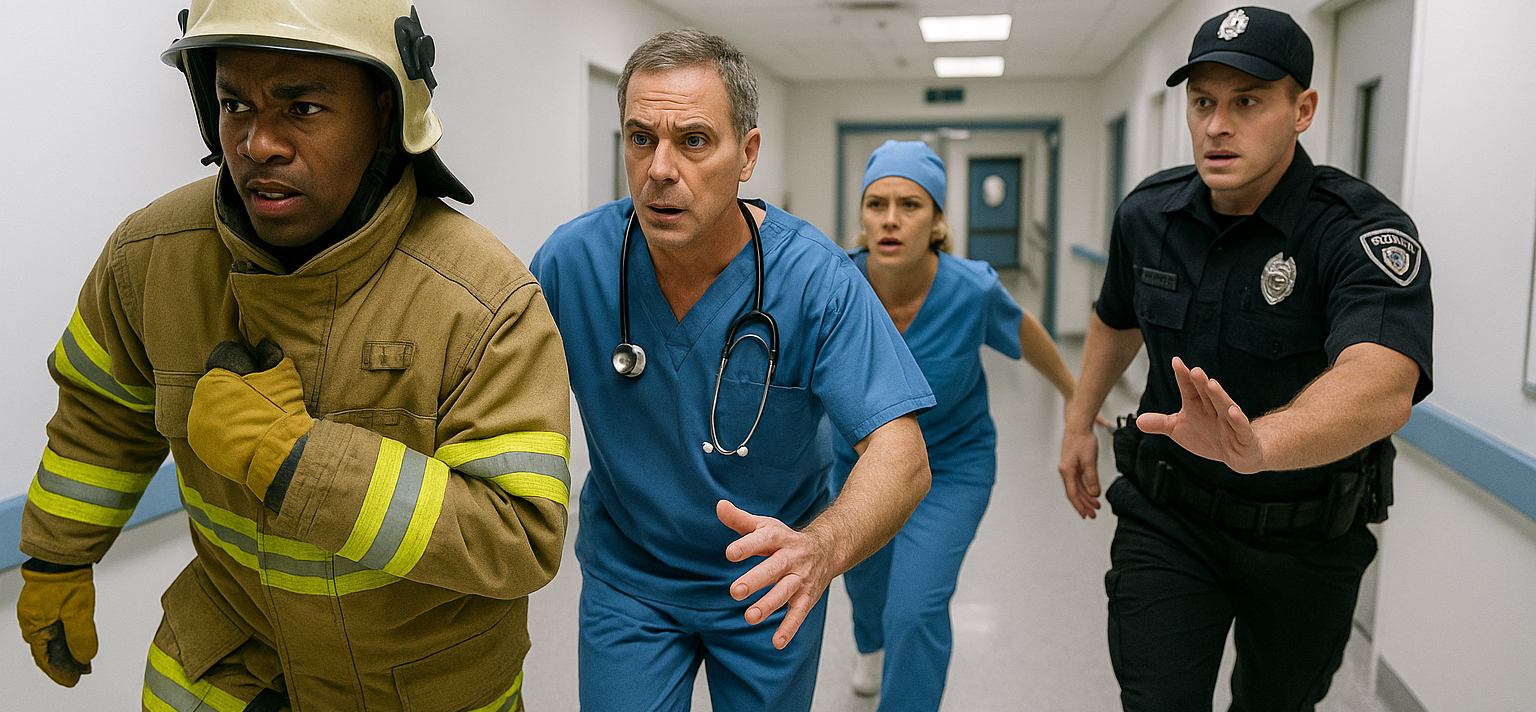In healthcare settings where lives depend on accurate information exchange, listening isn't just a courtesy—it's a critical safety practice. Yet despite its importance, effective listening remains remarkably rare in healthcare interactions. Rushed providers interrupt patients after an average of just 11 seconds. Hierarchical team structures inhibit junior members from speaking up. Handoff processes prioritize information delivery over comprehension verification.
This listening deficit contributes directly to preventable harm. Missed symptoms, overlooked concerns, and undetected early warnings all stem partly from listening failures. When providers don't listen effectively to patients, each other, or themselves, they create dangerous information gaps that compromise care quality and safety.
Transforming listening from a peripheral "soft skill" to a core safety practice requires understanding both why it matters and how to implement it systematically. By reconceptualizing listening as a fundamental safety intervention, healthcare organizations can prevent harm, improve outcomes, and create more resilient systems.
The Safety Case for Active Listening
Evidence increasingly demonstrates that effective listening directly impacts safety outcomes:
Harm Prevention Through Early Warning Detection
Patients and families often recognize concerning changes before they appear in vital signs or other objective measures. Research indicates that family concerns predict patient deterioration with remarkable accuracy, yet these early warnings frequently go unheeded because of inadequate listening.
Studies of rapid response team activations reveal that in many cases, patients or families had expressed concerns hours before clinical deterioration became obvious. The difference between organizations with strong safety records and those with poorer outcomes often lies in how attentively these early warnings are heard.
Error Reduction Through Complete Information Gathering
Diagnosis relies on comprehensive information gathering, which depends directly on listening quality. Studies show that diagnostic accuracy improves significantly when providers allow patients to complete their opening statements without interruption.
Research on diagnostic errors consistently identifies incomplete information gathering as a primary contributor to missed or delayed diagnoses. Listening failures—including premature interruption, closed questioning, and failure to explore patient concerns—directly contribute to these information gaps.
Safety Culture Enhancement Through Psychological Safety
Teams where members feel heard demonstrate stronger safety performance across multiple indicators. Speaking up about concerns, near-misses, and safety suggestions depends on the belief that one will be listened to respectfully.
Organizations with strong psychological safety report more near-misses, catch more errors before they cause harm, and implement more safety improvements than those where speaking up feels futile or dangerous.
Active Listening as a Structured Practice
Effective listening in healthcare isn't passive or instinctive—it's an active, structured practice with specific components that can be taught, measured, and improved:
Beyond Active Listening Framework
The Beyond Active Listening framework provides a structured approach with seven specific elements:
- Clarifying: Asking open-ended questions to gather complete information "Can you tell me more about when this started?"
- Paraphrasing: Restating content in your own words to verify understanding "So you've been experiencing this pain for three days, and it's worse with movement. Is that correct?"
- Reflecting: Acknowledging emotions to demonstrate empathy "I can hear how frustrating this has been for you."
- Affirming: Validating concerns and experiences "That's important information, and I'm glad you told me about it."
- Mirroring: Matching appropriate non-verbal cues to enhance connection Adopting a similar posture and speaking pace
- Advocating: Acknowledging issues and suggesting collaborative solutions "That sounds like a significant problem; let's work together to address it."
- Summarizing: Recapping key points to ensure comprehensive understanding "Before we move on, let me make sure I've understood everything..."
This framework transforms listening from a passive activity to an active safety intervention.
Tactical Listening Techniques
Beyond the structured framework, specific tactical listening techniques enhance safety in healthcare settings:
- The 20-Second Rule: Allowing patients to speak uninterrupted for at least 20 seconds at the beginning of encounters
- Cognitive Challenge Alertness: Adapting communication to the cognitive state of the person speaking
- SBAR Reception: Actively structuring how you receive handoff information
- The Universal Greeting: Starting interactions with a consistent format that establishes listening intention
- Proxemics Management: Using appropriate distance and positioning to increase safety, demonstrate respect, and optimize listening conditions
These tactical approaches create the conditions for effective information exchange in high-stakes healthcare environments.
Implementing Listening as a Safety Practice
To transform listening from an individual virtue to an organizational safety practice requires systematic implementation:
1. Safety Event Analysis
Begin by examining safety events through a listening lens:
- Were early warnings expressed but not heard?
- Did communication barriers prevent complete information exchange?
- Were concerns dismissed or minimized before being fully explored?
- Did hierarchical or cultural factors inhibit speaking up?
This analysis helps identify specific listening failures that contribute to safety breakdowns.
2. High-Risk Listening Moments
Identify and prioritize high-risk moments where listening failures are particularly dangerous:
- Handoffs and transitions of care
- Initial patient assessments
- Family expressions of concern
- Cross-disciplinary consultations
- Discharge planning conversations
- Critical results communication
These moments demand enhanced listening protocols and vigilance.
3. Structured Listening Tools
Develop and implement structured tools that support consistent listening quality:
- Listening checklists for high-risk communication scenarios
- "Teach back" protocols that verify understanding
- Standardized concern escalation processes
- Closed-loop communication requirements
- Structured debriefing templates that include listening quality assessment
These tools make good listening a systematic expectation rather than an individual choice.
4. Measurement and Feedback
Establish metrics and feedback mechanisms focused specifically on listening quality:
- Behavioral observation of key listening behaviors
- Patient perception of being heard and understood
- Information accuracy across communication transitions
- Speaking up frequency as a proxy for psychological safety
- "Listening rounds" where leaders assess communication culture
These measurements create accountability for listening as a safety practice.
5. Skill Development Infrastructure
Build the capabilities needed for effective listening through:
- Scenario-based listening practice with structured feedback
- Video review of actual or simulated patient interactions
- Listening coaching from communication specialists
- Team-based listening simulation
- Cross-disciplinary listening exchanges
This infrastructure recognizes that effective listening requires deliberate skill development, not just good intentions.
Overcoming Barriers to Effective Listening
Several systemic barriers in healthcare environments inhibit effective listening:
Time Pressure
The perception that listening takes too much time represents perhaps the most significant barrier. However, research consistently shows that effective listening actually saves time by:
- Reducing repeated visits for unresolved concerns
- Preventing diagnostic errors that require correction
- Avoiding communication-based complaints and grievances
- Minimizing treatment non-adherence due to misunderstanding
Organizations must create realistic workloads that allow for appropriate listening time as a safety investment.
Technology Interference
Electronic health records and other technologies often create physical and attentional barriers to listening. Strategies to address this include:
- Optimizing screen positioning to maintain eye contact
- Using technology collaboratively with patients
- Creating technology-free moments during interactions
- Developing documentation approaches that support rather than impede listening
Technology should enhance rather than replace human connection.
Hierarchical Communication Cultures
Traditional healthcare hierarchies often suppress listening across status differences. Addressing this requires:
- Explicit leadership modeling of listening to all team members
- Structured opportunities for bidirectional feedback
- Clear expectations that concerns deserve attention regardless of source
- Psychological safety measures that protect those who speak up
Flattening communication hierarchies enhances information flow and safety.
Inadequate Training
Few healthcare professionals receive explicit training in listening as a clinical skill. Remedying this gap involves:
- Integrating listening skills into clinical education
- Providing continuing education focused specifically on listening
- Assessing listening competency as a clinical requirement
- Developing specialized training for high-risk listening scenarios
Listening deserves the same educational attention given to other clinical skills.
The Return on Investment
Investing in listening as a safety practice yields measurable returns:
- Reduced adverse events and near-misses
- Improved diagnostic accuracy and timeliness
- Enhanced patient satisfaction and engagement
- Decreased complaints and litigation
- Improved team function and resilience
- Reduced clinician burnout
- Better clinical outcomes across multiple measures
These benefits make listening one of the highest-yield safety investments available to healthcare organizations.
By reconceptualizing listening as a fundamental safety practice rather than a peripheral courtesy, healthcare can address a significant contributor to preventable harm. The path forward involves both individual skill development and systemic changes that make effective listening an organizational priority and expectation.
When healthcare embraces listening as essential to safe care—as important as hand hygiene or medication reconciliation—it moves toward fulfilling its fundamental promise: first, do no harm.







